Can rooftop solar alone solve climate change? Here’s the answer
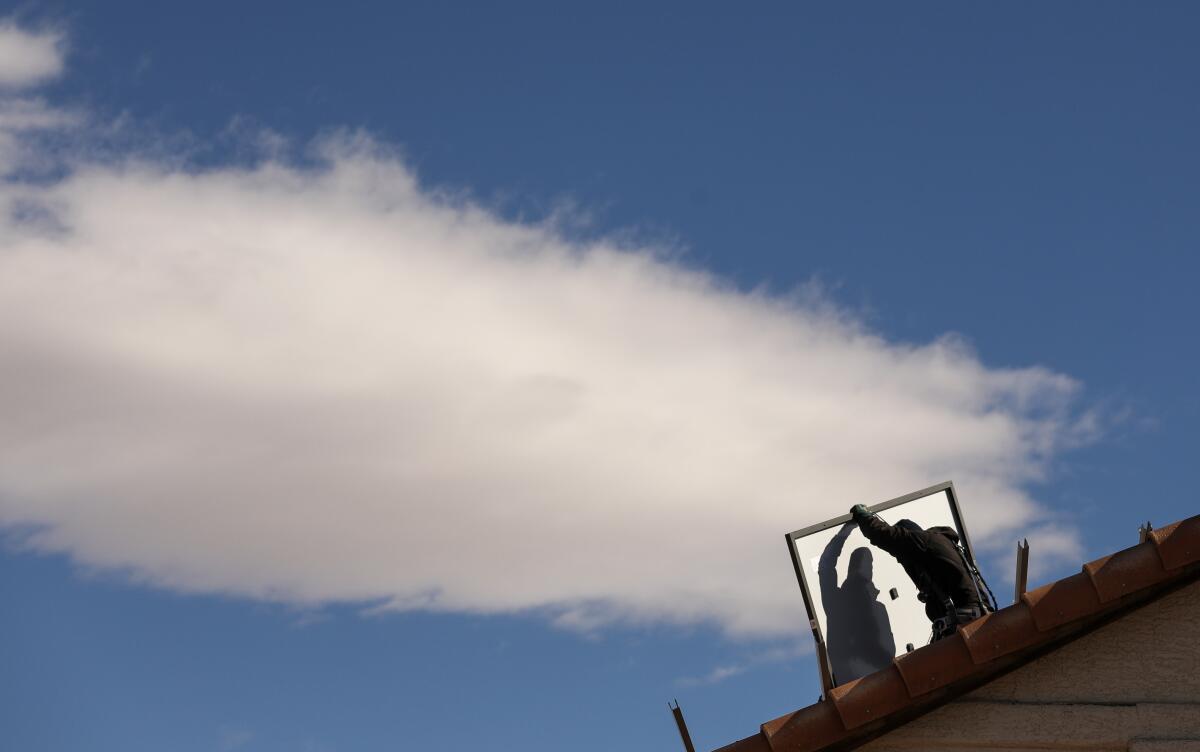
- Share via
This story originally published in Boiling Point, a newsletter about climate change and the environment. Sign up here to get it in your inbox.
No matter how many times I write about renewable energy — about sprawling solar farms, towering wind turbines and lengthy power lines carrying clean electricity to faraway cities — there’s one question I get asked again and again and again:
Why do we need all that industrial infrastructure when we can put solar panels on rooftops and parking lots instead?
It’s a great question — and one I attempt to answer in my latest story, published this week.
For Part 3 of our Repowering the West series, I traveled to Nevada with photographer Brian van der Brug and videographers Jessica Q. Chen and Maggie Beidelman, who produced a mini-documentary. We explored a stretch of the Mojave Desert where companies want to build dozens of solar farms — the greatest concentration of solar projects in the U.S., at least that I know of.
How much damage will those projects cause to ecosystems and wildlife on America’s public lands? Do we really need them, when there are loads of homes and warehouses and parking lots that could host solar panels in Las Vegas and other cities?
Big surprise: There are no easy answers. But there are some baseline realities that I hope you’ll consider.
First: There aren’t nearly enough rooftops to replace all the fossil fuels that America currently burns to generate electricity.
As I noted in the story, the National Renewable Energy Laboratory has estimated U.S. rooftops could generate 1,432 terawatt-hours of power per year. That’s nearly 39% of the electricity Americans used a decade ago — but just 13% of what we’ll need come 2050 as more people drive electric cars and heat their homes with electricity, according to Princeton University research.
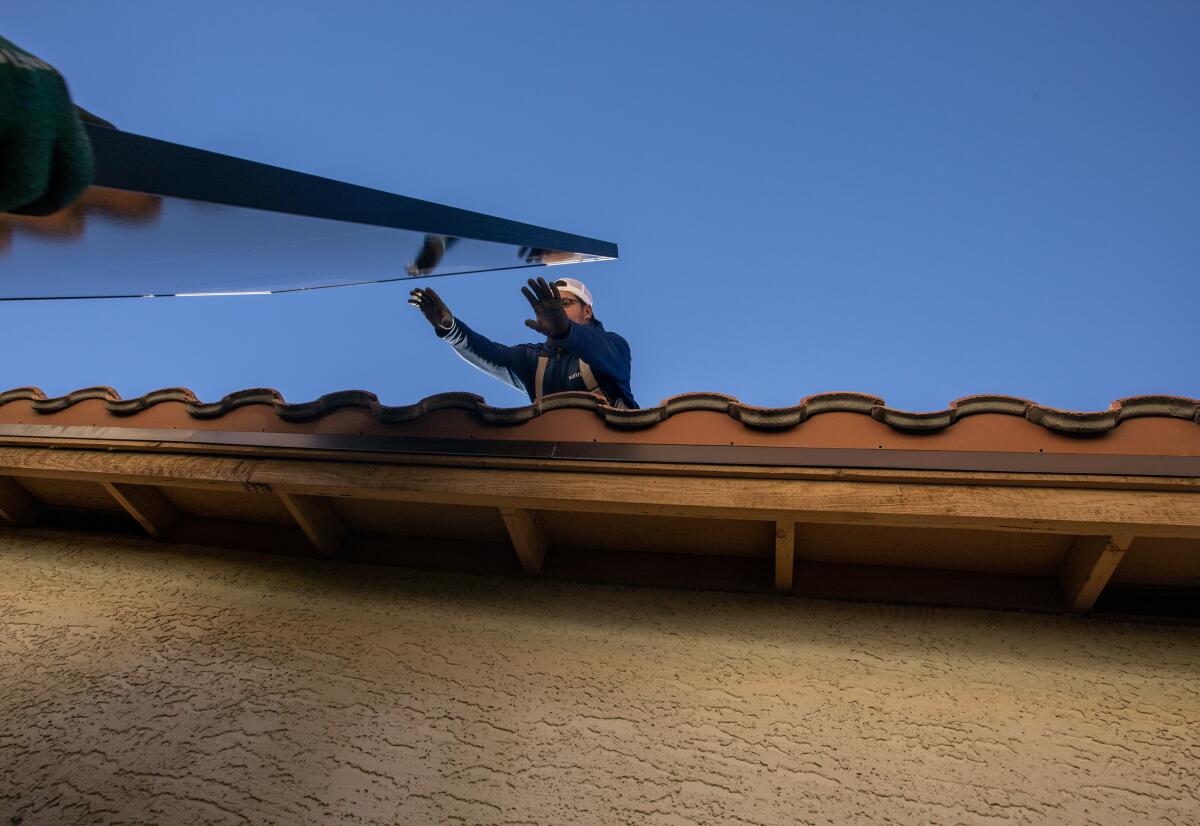
Even if you add in parking lots and other areas within cities, it’s unlikely urban solar systems could supply more than one-quarter or perhaps one-third of U.S. power, several experts told me — even if solar panels are installed in every suitable spot.
And the reality is, solar panels almost certainly won’t be installed in every suitable spot. Some cities won’t embrace them. Some homeowners won’t want them. Some families won’t be able to afford them, even with generous financial incentives.
Robert Margolis — one of the researchers who led the federal study of rooftop solar’s potential — told me small-scale, distributed solar systems won’t be enough. Not if we’re serious about getting the climate crisis under control.
“The only way is through a combination of distributed and utility-scale solar,” he said.
Not all solar projects need to be built on pristine public lands. There’s potential for solar development on “brownfields” such as abandoned mines and toxic Superfund sites, as well as reservoirs, landfills, highway corridors, irrigation canals and agricultural areas. In May, a bipartisan bill meant to promote solar development on farmland was introduced in the U.S. Senate.
But that kind of low-impact development is frequently rife with its own costs and challenges. Putting solar on disturbed lands — or on top of other infrastructure — can be far more expensive than building in wide-open spaces, especially if those lands aren’t near long-distance transmission lines. Building a power plant on a toxic site can also mean taking on financial liabilities.
“We cannot just do it on brownfields or rooftops. They aren’t large enough to do it at scale. They’re too expensive,” said Peter Weiner, a San Francisco-based lawyer who represents solar firms. “And people are not excited about energy costs rising.”
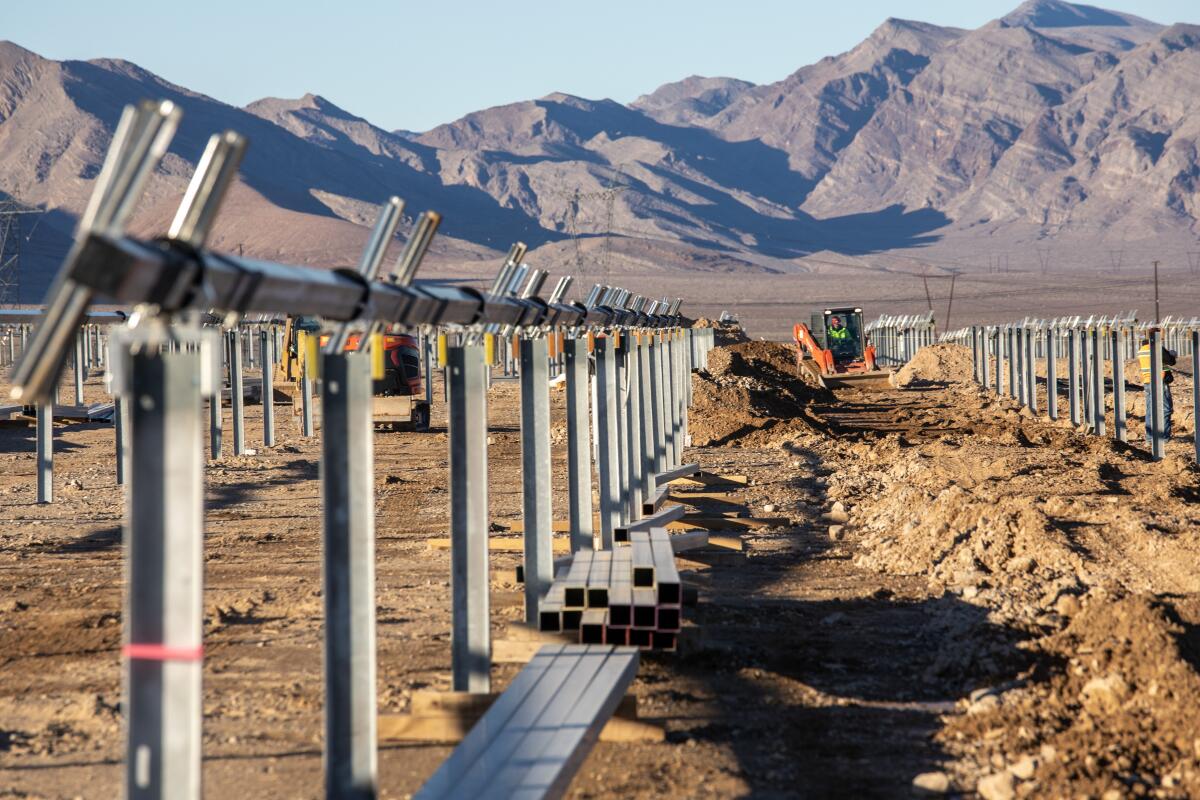
Dustin Mulvaney, an environmental studies professor at San José State University, co-wrote a study estimating the U.S. has more than 300,000 square miles of abandoned farmland and other disturbed sites where solar projects could go — more than enough to power the country. But it’s hard to say how much of that solar could actually get built, considering the obstacles.
“No one has looked at what it would actually take,” Mulvaney said.
The nonprofit Nature Conservancy is trying to prove out the concept of solar fields on former mine sites.
In rural eastern Nevada, the group is working with local, state and federal officials to try to build a small solar farm at the long-abandoned Caselton mine, where silver, lead and zinc were once extracted. It would be one of just a few such solar projects in the country. The electricity would supply Lincoln County, which has long depended on hydropower from Hoover Dam — and in recent years has been forced to pay exorbitant prices for extra energy on the spot market as water levels have fallen at Lake Mead.
The obstacles, which are significant, include the need to study and clean up mining pollution so that solar development doesn’t create new health or safety hazards. It’s a long process that’s still far from complete. But supporters are hopeful.
“We’re driven to think we need to build all this [solar] at massive scale,” said Jaina Moan, director of external affairs for the Nature Conservancy’s Nevada chapter, who told me about the Caselton mine project as we hiked up Nevada’s Black Mountain. “But not only are small solutions feasible — maybe they can be developed and built more quickly.”
I hope the Nature Conservancy and its partners can get this solar facility in the ground, and help others learn to build solar on abandoned mines faster and at lower cost. I’m similarly hopeful for renewable energy projects on other disturbed lands.
But there are no guarantees. And in the meantime, we’re losing precious days and years continuing to burn fossil fuels.
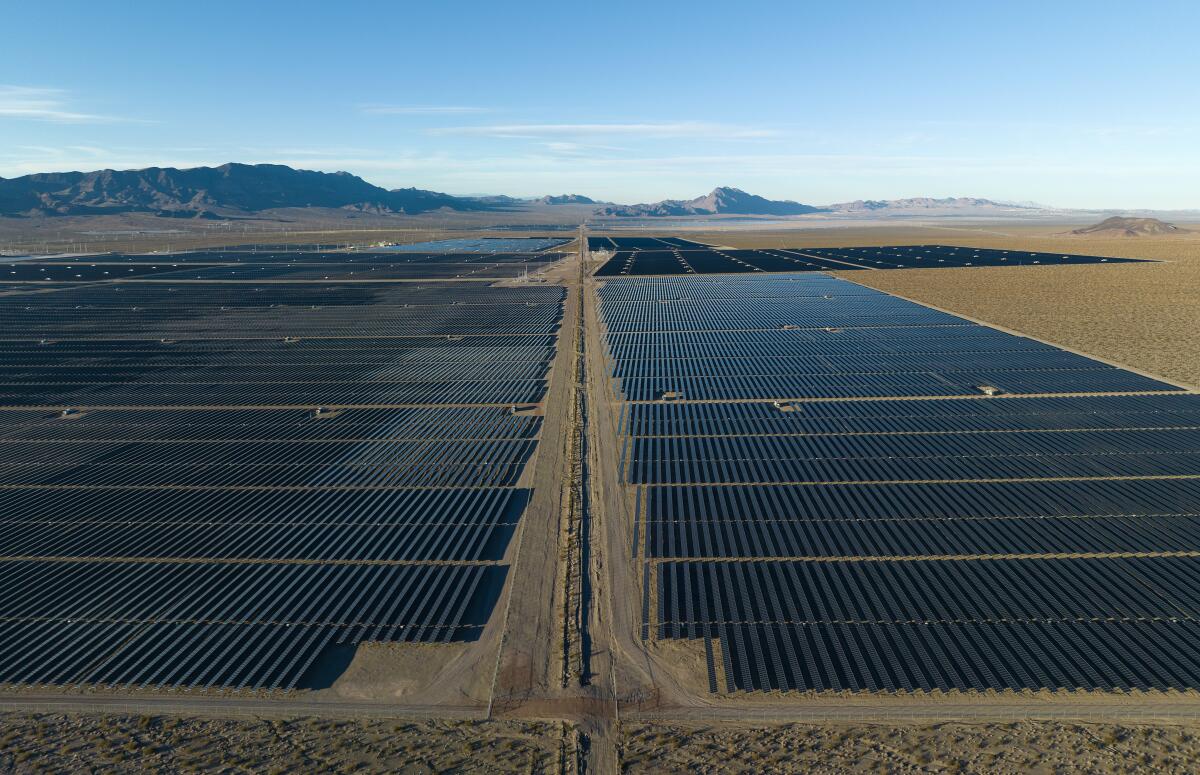
I’m not trying to deny that massive solar farms, wind turbines and electric lines can harm ecosystems and add to the extinction risk for certain species. I’ve seen those effects firsthand. I spend a lot of time exploring them in my story on Nevada.
But right now, utility-scale solar and wind farms are some of our most effective tools for replacing coal, oil and gas.
Energy companies are good at building centralized power plants because they’ve been doing it for more than a century. They know how to turn a profit from those plants — as do the monopoly electric utilities that operate the transmission grid.
The federal government, meanwhile, is a landowner with enormous holdings in the West, and a desire to get projects built.
From a consumer perspective, power from big solar and wind farms is cheaper than rooftop solar. Keeping electric rates as low as possible is crucial for getting people to replace their fossil-fueled cars and furnaces with electric vehicles and heat pumps.
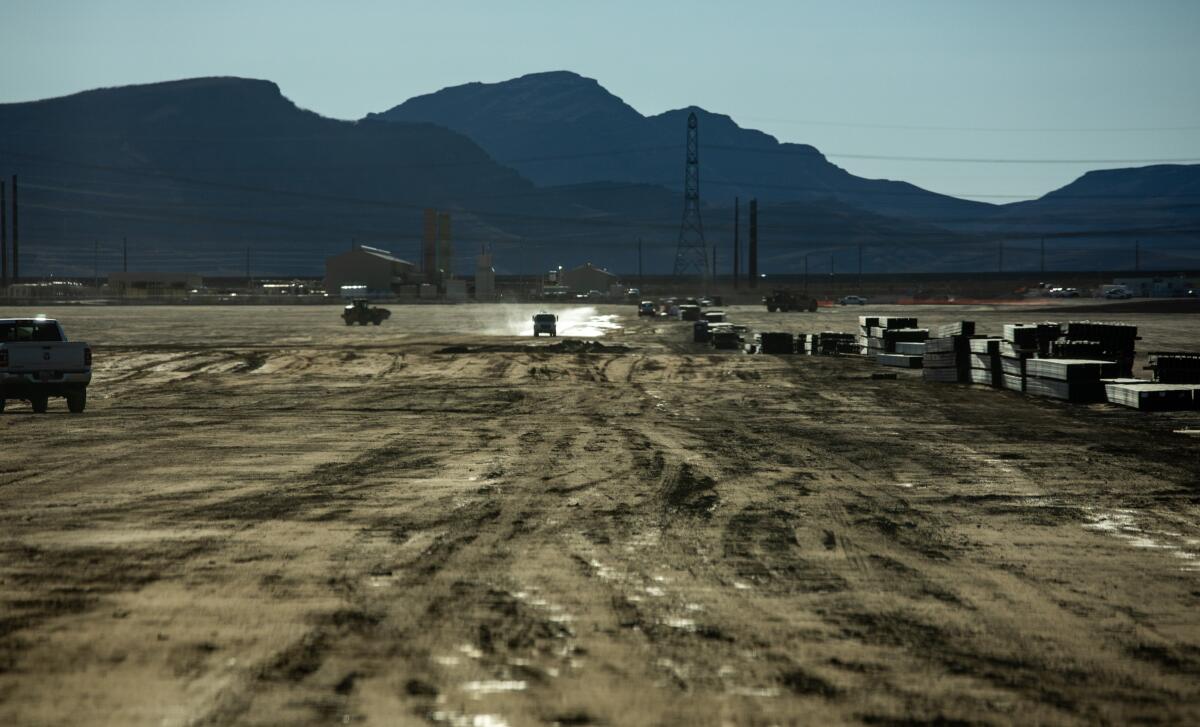
Don’t get me wrong — the more rooftop and small urban solar systems get installed, the better. Limiting harm to wildlife, avoiding time-consuming battles with conservationists and rural communities, helping homes and businesses keep the lights on during blackouts — those are important goals. It’s easy to understand why so many people are furious with monopoly utilities such as Southern California Edison and Pacific Gas & Electric for fighting to reduce financial incentives for rooftop solar.
But I’m 31 years old, and I hope to live on this planet for a long time. Call me selfish, but human survival is my top priority.
We absolutely need to protect wildlife and ecosystems — both because it’s the moral thing to do and because human well-being depends on a healthy natural world. The “30 by 30” campaign to protect 30% of all lands and waters by 2030 is a noble cause.
But slamming the brakes on big renewable energy projects, in hopes of solving the climate crisis without them?
That would be a wildly risky strategy.
Fires, droughts, heat waves and storms are already deadlier and more destructive than ever — and global warming is just getting started. The conversation needs to be about limiting damage from large solar and wind farms, not eliminating it entirely.
Which brings us back to Nevada.
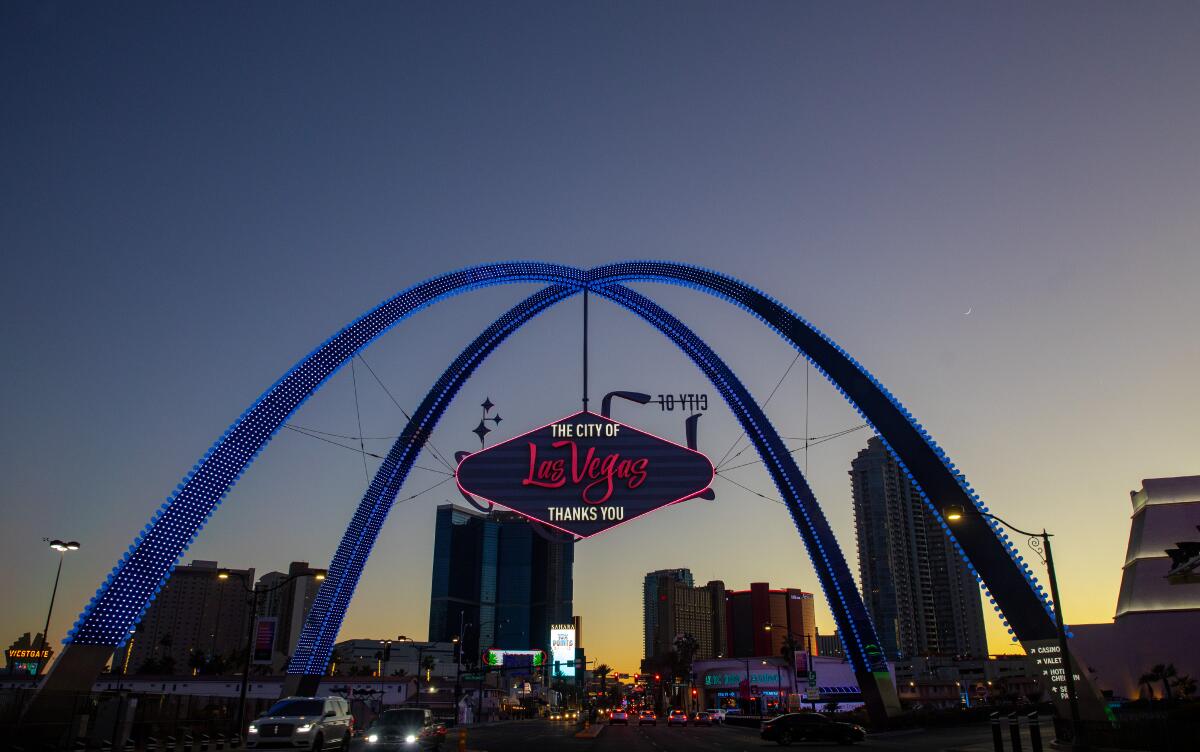
The Silver State is at the heart of the energy transition in the American West, geographically and metaphorically. More than four-fifths of Nevada’s land area is owned by the federal government — more than any other state, making it an obvious target for energy developers as the Biden administration looks to promote renewables. Many of those lands are flat, sunny and not far from California. Much of the solar proposed in southern Nevada is designed to supply electricity to the Golden State.
Nevada’s biggest utility company has embraced the energy transition.
Faced with a state mandate of 50% renewable energy by 2030 — and a longer-term goal of 100% clean energy — NV Energy has signed dozens of contracts for solar, wind and geothermal power. The utility, owned by billionaire investor Warren Buffett, plans to build hundreds of miles of power lines to ferry renewable electricity across the state. Federal officials are considering whether to approve those lines, known as Greenlink West and Greenlink North. They would be hugely profitable for Buffett.
Conservation activists are fighting back — two activists more than anyone.
Basin and Range Watch was one of the first advocacy groups I encountered when I started covering energy for the Desert Sun in Palm Springs nearly a decade ago. As I wrote in 2014, the group’s founders believe “the renewable-energy benefits of large-scale solar plants will never outweigh the environmental harm,” and “policymakers should focus on rooftop solar panels.”
“It doesn’t work to put big solar in the desert and preserve wildlife,” co-founder Kevin Emmerich told me at the time.
He continues to make that case alongside his wife and co-founder, Laura Cunningham, even as most conservation groups support at least some big solar. I recently spent an afternoon with Emmerich and Cunningham, starting at Sarcobatus Flat — as detailed in Part 3 of Repowering the West — and later driving to Indian Springs Valley, another gorgeous landscape targeted for solar.
We arrived in the valley just before sunset, stopping at a spot off Highway 95 an hour’s drive northwest of the Las Vegas Strip. The yucca and creosote plants were bathed in golden light. The Spring Mountains were covered in sparkling fresh powder.
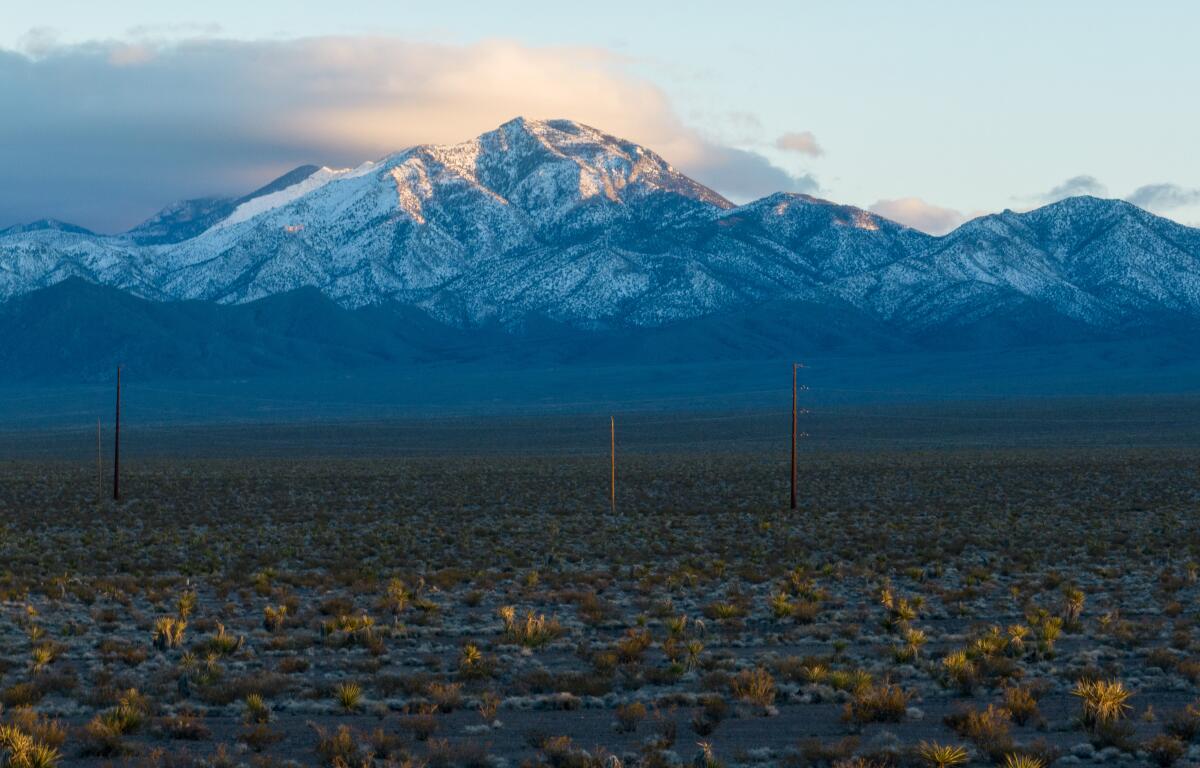
Our view of the snowy peaks was interrupted by a line of poles and wires emanating from Innovation Substation, which is owned by Florida-based NextEra Energy and feeds electricity into the California power grid. The French solar developer EDF Renewables hopes to install solar modules across 2,400 acres of federal land here and plug into Innovation Substation.
Cunningham and Emmerich aren’t happy with that plan, or with two other solar farms proposed nearby.
“It shouldn’t all be about chemistry of the atmosphere. It should also be about species and extinction and the quality of life out here for all these tortoises and kit foxes, Mojave yuccas,” Cunningham said. “They’ll just bulldoze these.”
Basin and Range Watch has asked the Biden administration to protect much of the area, describing it as “the most significant Mojave Desert tortoise connectivity corridor in southern Nevada.” Federal officials, meanwhile, have pointed to research by Ken Nussear, an ecologist at the University of Nevada, Reno, that predicted EDF’s Bonanza solar project would have “no discernible effects” on the ability of tortoise populations to move across the desert and maintain healthy genetic diversity.
EDF development director Devon Muto, who works in the company’s San Diego office, told me the Bonanza project “is not being developed on pristine, intact desert landscapes,” but rather will be surrounded or intersected by a highway, electric lines, gravel pits, mines and an Air Force base. He said the protections proposed by Basin and Range Watch are “not justified by science.”
“Assuming the Bonanza Project proceeds, we are committed to designing and constructing it using feasible best practices to minimize grading and vegetation removal and allow for continued use of the site by tortoises,” Muto said in an email.

For some hardcore conservationists, though, designing solar farms to reduce environmental harm largely misses the point.
“As a biologist, I think we should start with energy efficiency and energy conservation, and then go down to distributed rooftop solar and parking lots, then to already degraded lands,” Cunningham said. “And at the very bottom of the priority list should be [public lands like this]. This should be the last to develop for solar.”
It’s hard for me to argue, sitting here at my computer in Los Angeles. It’s also hard for me to imagine a safe future for myself, my family and my friends without lots of gigantic solar farms and wind turbines, for all the reasons I described above.
Repowering the West will continue soon with Part 4, focused on Idaho, hydropower dams, salmon runs and the politics of green energy in a deep-red place. I previewed that story in May, after getting back from a week-plus in the Gem State.
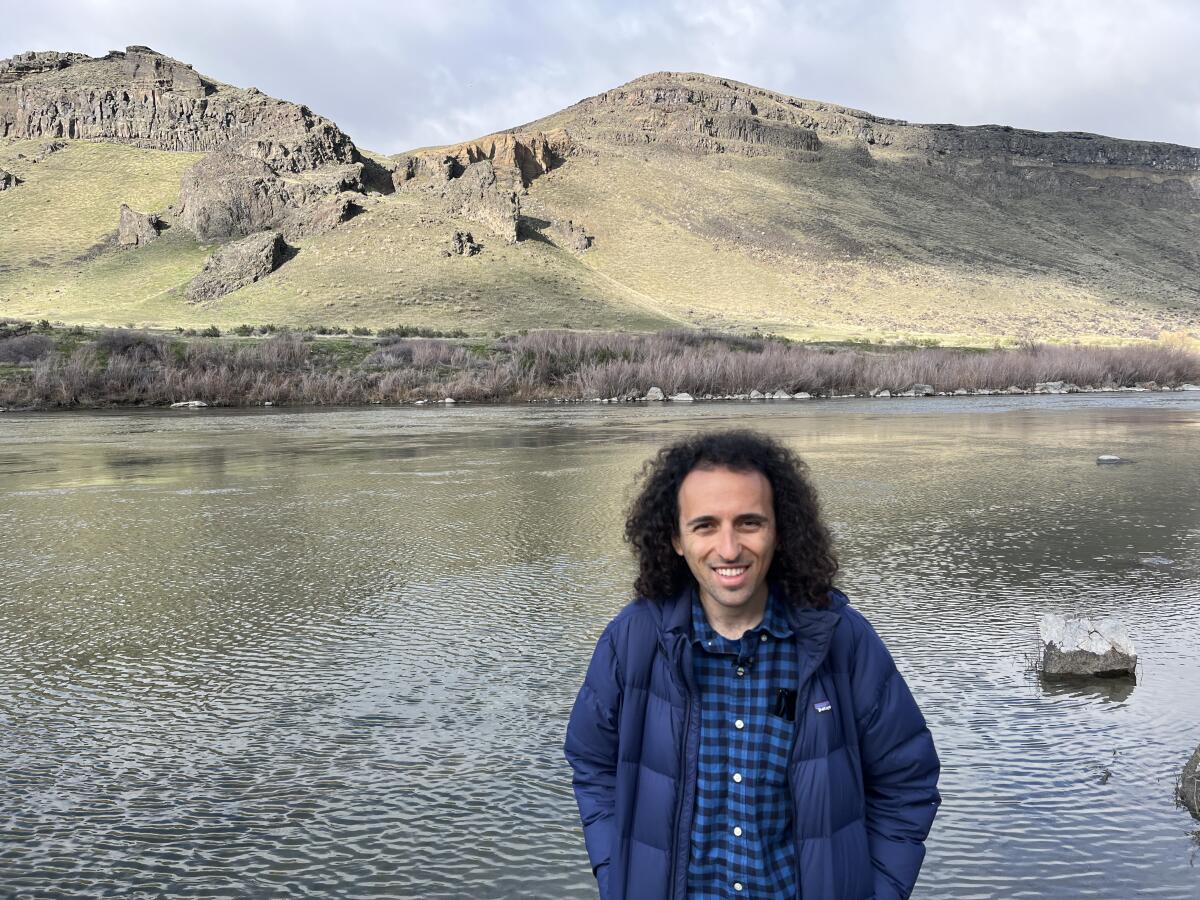
One last takeaway, whether you live in Nevada or Idaho or elsewhere: The Western states are in this together.
Some of the region’s best solar and wind resources are far from the major cities that badly need clean power. There’s a reason developers are investing tens of billions of dollars to prop up wind turbines in Wyoming and solar farms in California’s Imperial Valley — places with not nearly enough people to use all that energy. Just this month, officials in San Diego County approved a deal to buy power from one of the Nevada solar-plus-storage projects, known as Yellow Pine, that I visited earlier this year.
One way to reduce the need for new infrastructure — and limit environmental damage — would be for different parts of the West to share even more energy through existing power lines. The California Independent System Operator has been encouraging this, and has asked state lawmakers to allow for easier resource-sharing by creating a “regional transmission organization.”
It’s an idea that has faced intense resistance, as I’ve written previously. California labor unions don’t want to see jobs building solar and wind farms shipped out of state. Some environmental activists and consumer advocates worry about California losing control of its electric grid to red-state lawmakers, who might then try to shove expensive coal power down our throats.
The Silver State is once again at the heart of the debate.
Nevada lawmakers passed a bill requiring NV Energy to join a regional transmission organization by 2030, with Colorado quickly following suit. Linking up with California’s electric grid would be a natural choice. But after Golden State legislators again declined to pass enabling legislation this year, other Western states may be forced to turn to an Arkansas-based energy market instead.
“California needs the larger West. The West needs California,” said Vijay Satyal, a Salt Lake City-based staffer at the environmental group Western Resource Advocates. “You can’t meet all your renewable energy goals alone.”
He’s right. Even if a regional market isn’t the answer, no state will meet its climate goals alone. Or with rooftop solar alone.
Those are realities we all need to start wrapping our heads around.
ONE MORE THING
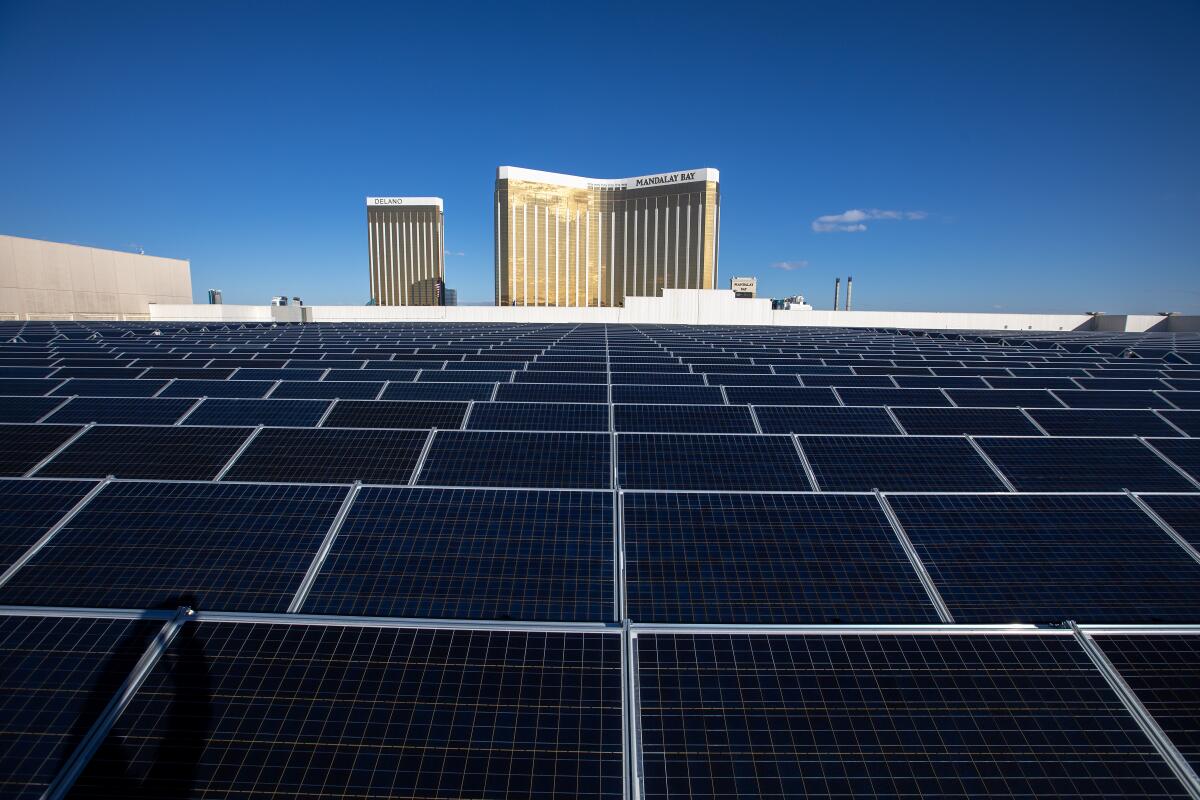
If you don’t already pay for The Times, I’d ask you to please consider subscribing to support our reporting. I love doing this work, but I need to make a living. If you’re not yet convinced, check out the previous stories in Repowering the West here.
Either way — thank you, as always, for reading.
We’ll be back in your inbox on Tuesday. To view this newsletter in your Web browser, click here. And for more climate and environment news, follow @Sammy_Roth on Twitter.
Toward a more sustainable California
Get Boiling Point, our newsletter exploring climate change, energy and the environment, and become part of the conversation — and the solution.
You may occasionally receive promotional content from the Los Angeles Times.




